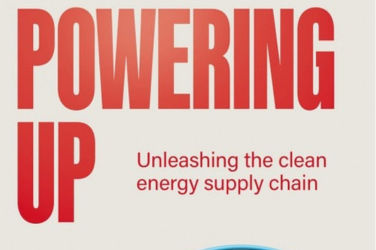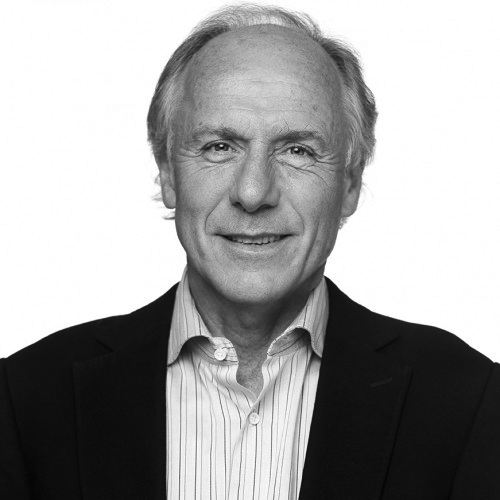
- Free Article: No
- Contents Category: Science and Technology
- Review Article: Yes
- Article Title: Shipping sunshine
- Article Subtitle: Accelerating clean energy transformation
- Online Only: No
- Custom Highlight Text:
Our planet is in trouble. Climate change is real. Widespread, tumultuous change has occurred in our atmosphere, oceans, biosphere, and cryosphere, driving weather and climate extremes, anomalies, and record heat across the globe. Already, the damage has been substantial. ‘[Climate change] has led to widespread adverse impacts and related losses and damages to nature and people’ (Sixth Assessment Report, UN Intergovernmental Panel on Climate Change, or IPCC). And the cause is well known. Decades of research and legions of scientists attest unequivocally that human-caused greenhouse gas emissions are causing global warming, threatening to precipitate unprecedented levels of global heating across the planet.
- Featured Image (400px * 250px):

- Alt Tag (Featured Image): Julian V. McCarthy reviews 'Powering Up: Unleashing the clean energy supply chain' by Alan Finkel
- Book 1 Title: Powering Up
- Book 1 Subtitle: Unleashing the clean energy supply chain
- Book 1 Biblio: Black Inc., $34.99 pb, 328 pp
- Book 1 Cover Small (400 x 600):

- Book 1 Cover (800 x 1200):

The primary focus of Alan Finkel’s new book, Powering Up, is neither the causes of climate change nor the rationale for action – those are amply addressed elsewhere, including in Finkel’s prior publication, Getting to Zero: Australia’s energy transition (Quarterly Essay 81). Rather, Powering Up addresses the implied, vital, and increasingly urgent question of what it will take to mobilise emission reduction at a greatly increased pace to contain warming globally and for Australia specifically.
It is difficult to imagine a person more qualified to address this complex question than Finkel. He was Australia’s Chief Scientist from 2016 to 2020 and special adviser to the Australian government on low-emissions technologies in 2021–22. He led the 2017 National Electricity Market review and the 2019 development of the National Hydrogen Strategy, and chaired the 2020 panel developing the Low Emissions Technology Roadmap. An engineer, scientist, academic, company founder, and adviser to governments, Finkel contributes clarity and pragmatism as he navigates the political, economic, scientific, and social contexts governing humanity’s ability to transform global energy usage.
Three central, interconnected themes recur throughout Powering Up. First, abundant, zero emissions electricity is the essential foundation for decarbonisation. Second, massive, transformative change is needed across the entire clean energy supply chain. And third, energy transition has special significance and presents immense opportunity for Australia due to the country’s unique potential to play an enabling role in the transformation required.
 Alan Finkel (Andre Goosen/Boem Headshots/Black Inc.)
Alan Finkel (Andre Goosen/Boem Headshots/Black Inc.)
The first line in Powering Up reads ‘It won’t be easy getting to net zero, Kathleen.’ Finkel recounts a dinner conversation in which he outlines the extent of the challenge. ‘The sheer scale of the task, I pointed out to Kathleen, is why we’d barely made a dent in reducing global emissions despite three decades of effort and concern. Between 1990 and 2021, the behemoth known as global civilisation only reduced its fossil-fuel diet from 87% [of global energy consumption] to 83%. Let me spell that out. We shaved off 4% in the last 30 years. In the next thirty we need to shave off 83%.’ Although solar and wind generation grew impressively in that same period (to five per cent of global energy consumption in 2021), this barely matches the relentless, continuing expansion of fossil fuel consumption.
Conceptually, the requirement is simple, Finkel explains: ‘Electrify everything. That is, convert the existing electricity supply to zero-emissions supply, expand it greatly and use electricity to replace oil, coal, and natural gas. Where the electricity is not directly suitable, use it to make hydrogen and synthetic fuels.’ The limiting factor is not technology, but the political, economic, and social shifts needed to expand clean energy capacity massively in a short time. Adds Finkel, ‘There is a lot to do. The clean energy transition is the biggest economic challenge in human history. Never before has a major source of energy been eliminated from the global economy, and now we are planning to replace all three [coal, oil, gas].’
Drawing on his experience helping to acquire intensive care unit (ICU) ventilators for Australia during the Covid-19 pandemic, Finkel explains that effective, efficient supply chains will be essential to sustain the pace and scale of expansion needed for renewable energy sources. Appropriately, Finkel defines the clean energy supply chain broadly, encompassing not only power infrastructure but also the raw materials, workforce, transportation, community involvement, government policies and social licence needed to replace fossil fuels.
Valuably, Powering Up highlights key elements of this supply chain, assessing the role each can play and the risks each presents in enabling rapid scaling up. This creates an overarching impression of the staggering speed, scope, and complexity of the supply-chain transformation Finkel is describing. Considering raw materials alone, ‘the increase [in global battery material production] will be between 11 and 17 times; rare earth element demand could increase 3 to 5 times; large traditional markets such as nickel will quadruple and copper will double by 2030 [to stay within the 1.5C warming threshold]. Most remarkable of all, the energy transition materials market will be bigger than the global coal market by 2030.’
Reflecting the importance of government and regulatory policy settings as enablers (and potentially, impediments) of supply-chain expansion, Powering Up devotes a chapter to ‘Getting the Policy Settings Right’. The chapter advocates consistent government intervention to stimulate demand for clean energy through mandates, incentives, and other policies, to attract investors and ensure transparency in transactions. The chapter also emphasises the need for regulatory reform to expedite approvals of new developments. ‘In most countries the regulatory system acts as a brake … The problem plagues transmission lines, hydropower reservoirs, solar farms, wind farms, mine expansions and new mines. Furthermore, policies to protect the local environment often trump policies to protect the global environment.’ Finkel sensibly advocates balanced regulation that reaches beyond protecting people and the environment to facilitating commerce and emission reduction as well.
In 2023, few nations are better positioned for the next era of clean energy than Australia, with its abundance of solar and wind energy, world-class reserves of most key energy transition materials, and large-scale project experience. Ross Garnaut’s ground-breaking work in Superpower (2019) and The Superpower Transformation (2022) articulates the case for Australia to leverage this abundance, earning a place as a world leader in decarbonisation and supplier of zero-carbon goods to the world.
Building on Garnaut’s case, Powering Up envisages a ‘tectonic’ geopolitical shift, where ‘yesterday’s powerful petrostates will be replaced by emerging electrostates’, supplying energy transition materials and decarbonised products to other nations. As an electrostate, Australia would mine, refine, and export essential minerals such as lithium, ‘ship sunshine’ (Finkel’s term for exporting clean energy embedded in zero carbon products such as hydrogen and green iron), export carbon offsets, and manufacture specialised clean energy products such as hydrogen electrolysers. These opportunities all require a ‘common, indispensable, enabling factor – clean, green, renewable electricity supplied 24 hours a day, 7 days a week’.
While Powering Up offers an optimistic view of Australia’s potential, it is instructive to recognise the nation’s current context. Australia is a heavy emitter, with fossil fuels constituting ninety-two per cent of its energy mix. Per capita CO2 emissions of 14.8 tonnes/year rank Australia as seventh among 266 countries, behind fossil-fuel behemoths such as Qatar, United Arab Emirates, and Oman, and exceeding per capita emissions of carbon heavyweights Saudi Arabia and the United States. Moreover, Australia’s per capita emissions are probably significantly understated; recent analysis indicates that Australia’s oil and gas production generates ninety-two per cent more fugitive methane emissions than official statistics show, and coal mines produce eighty-one per cent more than reported (International Energy Agency). In addition to high domestic emissions, Australia is the world’s largest exporter of metallurgical coal, and vies with Qatar and the United States as the leading exporter of liquefied natural gas, thus also contributing significantly to offshore global emissions.
Achieving net zero emissions in Australia therefore requires massively reconfiguring industrial and export energy infrastructures, while also decarbonising existing electricity. Other countries are in this race; moving slowly threatens dire consequences for Australia’s fossil-fuel-dependent economy. While Powering Up acknowledges difficulties in attaining net zero, it stops short of any complete assessment of change management processes and capabilities essential to mobilise supply chain transformation at the level and pace advocated. Such assessment could identify governance constructs (especially for coordination between levels of government, industries, and regulators on policies and energy market rules to eliminate emissions); regulatory reforms (including accelerated approvals for new generation, transmission and critical minerals infrastructure); integrated planning approaches (including planning for the two-thirds of emissions originating outside the electricity generation system); stakeholder engagement processes (including engaging local and Indigenous communities); performance management processes (including ongoing review of carbon emissions, renewable generation and storage capacity versus targets); partnerships and collaboration (including international collaboration to secure resilient supply chains and to support developing country energy transition); communications approaches; and mechanisms for feedback and learning.
Powering Up provides a stirring call to action, with global implications as well as special significance for Australia. The book makes a pivotal contribution to our understanding of what it will take to mobilise rapid transition to net zero emissions, advocating integrated, not piecemeal, change across the clean energy supply chain, and outlining Australia’s potential as a leading light and enabler. Finkel’s treatment of this complex topic – fact-based, compelling, supported by scientific and engineering insight – offers a foundation for further development of policies to engage stakeholders and accelerate transformation. The book is a must-read for government and for corporate and community leaders aspiring to escalate climate-change mitigation efforts.


Comments powered by CComment